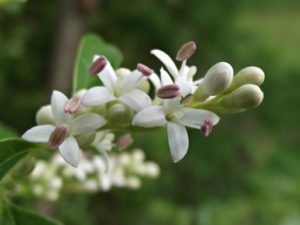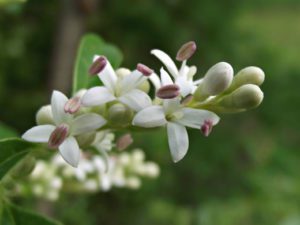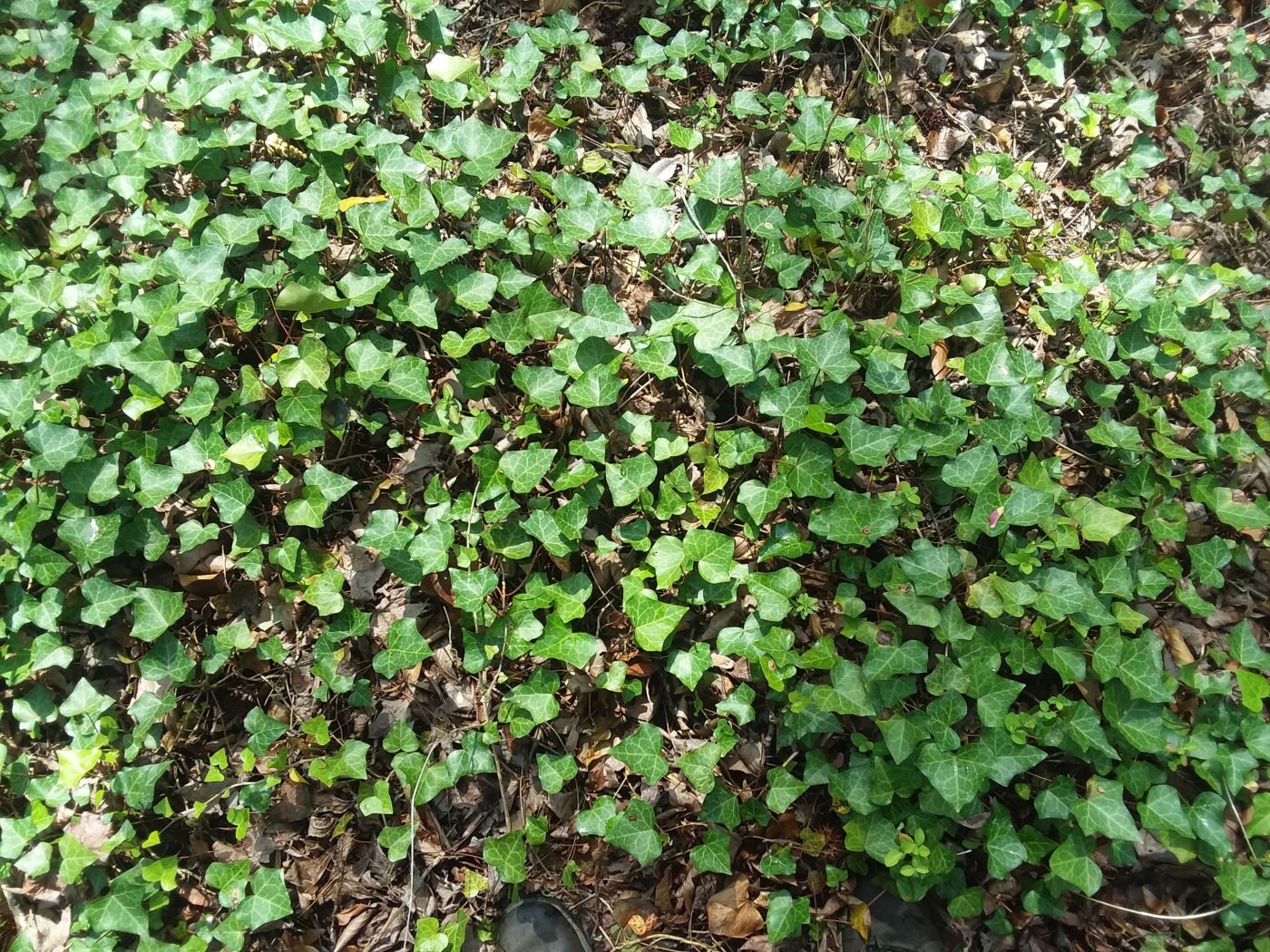By Frank Holleman
February 2, 2021
If you follow native plant publications or cleanup projects at public parks, you probably have noticed that privet is public enemy number one. When ecologists write about invasive exotic plants, privet usually leads the list, along with the more familiar and well-known kudzu and English ivy.
What is privet?
Ligustrum, most commonly Chinese Privet (Ligustrum sinense) in the Upstate or Japanese Privet (Ligustrum japonicum) in the lower state, is a shrub from Asia that has been popular in Europe, including Britain, as a hedge. In the Harry Potter books, the Dursleys live at #4 Privet Drive. It is thought that privet crossed the Atlantic with early English settlers homesick for a familiar hedge. Unfortunately, it produces a berry that birds love, and they spread it across the landscape. Privet also springs up from roots of other privet plants.
Why is it a problem?
Privet blankets damp woodlands. It creates what we call “privet thickets” that amount to forests of shrubbery throughout floodplains. It crowds out all native plants, separates the ground from the sun, and converts a native ecosystem to a privet monoculture. It also uptakes moisture and aspirates it, sucking water from the hydrology of the forest. Aesthetically, it converts an open floodplain forest of towering trees and woodland wildflowers into an impenetrable snarl of head-high privet trees and greenbriar, which loves to wind its way through privet’s branches. Research has even shown that privet promotes exotic earthworms that outcompete our native worms. https://www.fs.usda.gov/treesearch/pubs/47134.
What can we do about it?
One side benefit of privet is that it gives Native Plant Societies and naturalist organizations an unlimited supply of volunteer workdays. A determined group of volunteers can make a real dent in a privet invasion by participating in a two-hour volunteer session on a Saturday morning. The easiest way to get rid of privet is simply to pull it up and place the uprooted villain so that the roots don’t touch the ground. Some small sprigs may come up from orphaned roots the next year, but it will be years before they match the vanquished plant, and they can be easily removed the next year. Some privet plants are just too stubborn to pull up; those have to be sawn off and their stump painted with a strong herbicide. Where appropriate and when desperate, herbicide can be sprayed on a privet stand, but you have to be careful to avoid killing the good plants with the bad ones.
Join the Team!
The Stevens Creek Heritage Preserve in McCormick is a showcase of the impact of volunteer privet pulls. Volunteers with the Native Plant Society transformed the preserve, which is one of our most important wildflower preserves. Under the leadership of Mary Bunch (now-retired) of S.C. DNR, we trekked down there one day every January and pulled and cut privet from the floodplain. Over a period of years, the privet was gone and thousands of wildflowers popped up.
Nearer to home, we have been working several mornings each winter at the Blackwell Heritage Preserve near Travelers Rest, which contains the rare Bunched Arrowhead in its wetlands. There, the privet obscures the entire floodplain and nearly destroys some of the wetlands. We have made a big difference there.
So, the next time you see a privet pull advertised in our newsletter, come out. You will get some good exercise, see some beautiful nature, and, at the end of the day, be able to see that you have personally restored the landscape by conquering a battalion of invasive privet!
For further reading :





